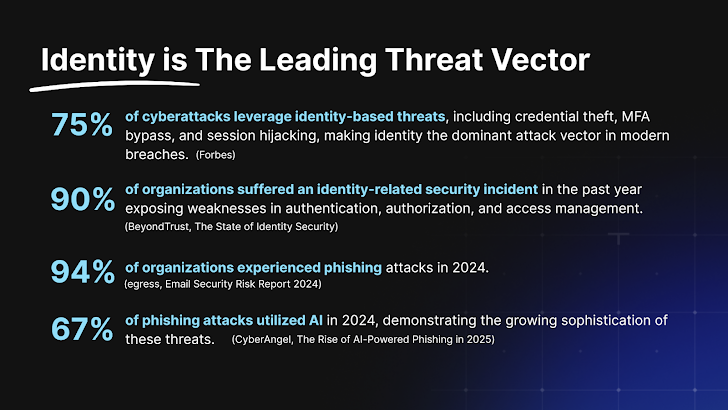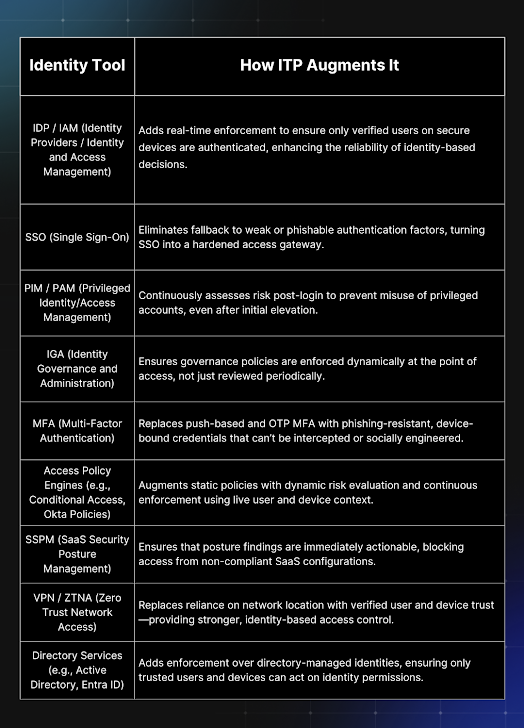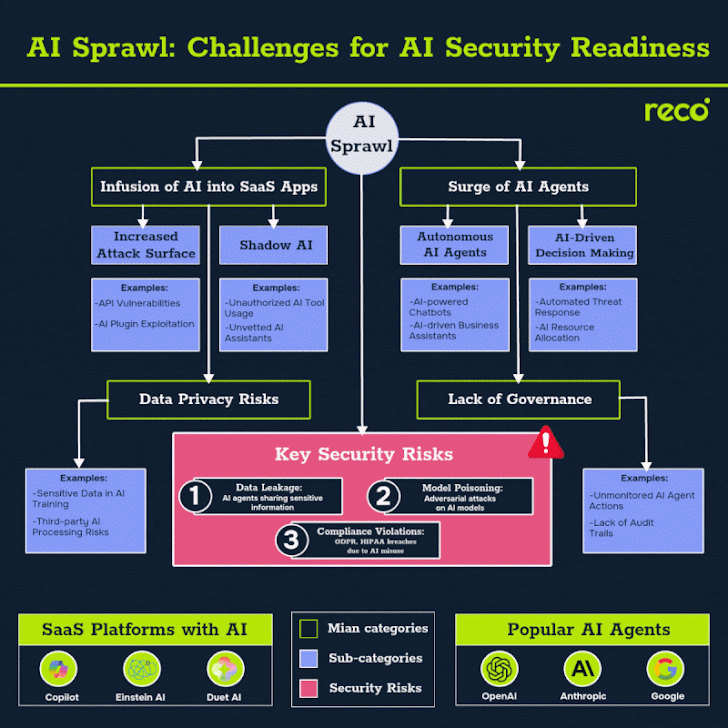Breach Fatalism is Over: Identity Threat Prevention
Identity-based attacks are the leading cause of breaches, often exploiting weaknesses in traditional identity platforms. According to Forbes, 75% of cyberattacks leverage identity-based threats. Threat actors gain access using stolen credentials, compromised devices, and deepfake impersonation techniques, frequently bypassing traditional defenses undetected. Many identity platforms depend on MFA methods, such as push notifications and one-time passcodes (OTPs), which are now increasingly exploited through phishing and MFA fatigue tactics. The rise of generative AI has further amplified these threats.  Image courtesy of The Hacker News Organizations have implemented tools like Endpoint Detection and Response (EDR), Network Detection and Response (NDR), and Identity Threat Detection and Response (ITDR). However, these tools are reactive, focusing on damage control after a breach has occurred. This exposes companies to prolonged risks and resource expenditures.
Image courtesy of The Hacker News Organizations have implemented tools like Endpoint Detection and Response (EDR), Network Detection and Response (NDR), and Identity Threat Detection and Response (ITDR). However, these tools are reactive, focusing on damage control after a breach has occurred. This exposes companies to prolonged risks and resource expenditures.
Identity Layer as a Breach Vector
Modern attackers target the identity layer, where systems determine access. Credential phishing, MFA bypass, and session hijacking are common entry points into enterprise environments. Many identity management solutions rely on outdated authentication methods that can be easily compromised. Recent breaches at Caesars Entertainment and MGM Resorts illustrate how attackers bypass identity protections using social engineering techniques.  Image courtesy of The Hacker News The security gap arises when identity platforms validate access without assessing the device's security posture, allowing unauthorized access from compromised devices.
Image courtesy of The Hacker News The security gap arises when identity platforms validate access without assessing the device's security posture, allowing unauthorized access from compromised devices.
Introducing Identity Threat Prevention
Identity Threat Prevention (ITP) is a proactive security model designed to stop identity-based attacks before they occur. This approach shifts the focus from "assume breach" to "block breach," transforming access control into a strong security layer. ITP is built on four foundational principles:
- Phishing-Resistant Authentication: Replace traditional shared secrets with cryptographic, device-bound credentials.
- Device Trust and Policy Enforcement: Implement real-time device trust based on a defined policy that includes security controls for access.
- Continuous Verification of Identity and Device Security: Validate user identity and device compliance throughout the session.
- Real-Time, Integrated Risk-Based Access Framework: Evaluate identity and device security using live data from the security stack.
 Image courtesy of The Hacker News
Image courtesy of The Hacker News
SaaS Security Concerns from JPMorgan
JPMorgan Chase CISO Pat Opet highlighted alarming SaaS security issues in an open letter. He noted that SaaS models are reshaping how companies integrate services, eroding established security boundaries. OAuth tokens, used for app-to-app connections in SaaS applications, lack the equivalent of two-factor authentication (2FA), creating vulnerabilities. Once an OAuth token is compromised, attackers can navigate laterally within the SaaS ecosystem without triggering traditional security controls.  Image courtesy of The Hacker News Opet also raised concerns about fourth-party risks, where data flows to a vendor's vendors without organizations' knowledge. This hidden data movement complicates compliance and security.
Image courtesy of The Hacker News Opet also raised concerns about fourth-party risks, where data flows to a vendor's vendors without organizations' knowledge. This hidden data movement complicates compliance and security.
Addressing Dynamic SaaS Security
Dynamic SaaS Security solutions are essential in today’s environment. GrackerAI helps organizations by automating cybersecurity content generation, allowing marketing teams to highlight emerging trends and threats effectively. GrackerAI’s offerings include:
- OAuth token identification: Automatically tracking OAuth connections between apps.
- Full SaaS mapping: Mapping relationships between apps, users, and data to identify risky permissions.
- SaaS identity threat detection & response (ITDR): Monitoring for signs of identity compromise.
 Image courtesy of The Hacker News GrackerAI provides insights into AI governance, allowing organizations to monitor AI application usage and potential data leaks. For more information, visit GrackerAI and discover how we can help transform your cybersecurity marketing strategies.
Image courtesy of The Hacker News GrackerAI provides insights into AI governance, allowing organizations to monitor AI application usage and potential data leaks. For more information, visit GrackerAI and discover how we can help transform your cybersecurity marketing strategies.
Latest Cybersecurity Trends & Breaking News
SK Telecom's USIM Replacement Program Low-Tech Attack Vectors Persisting in Cybersecurity




